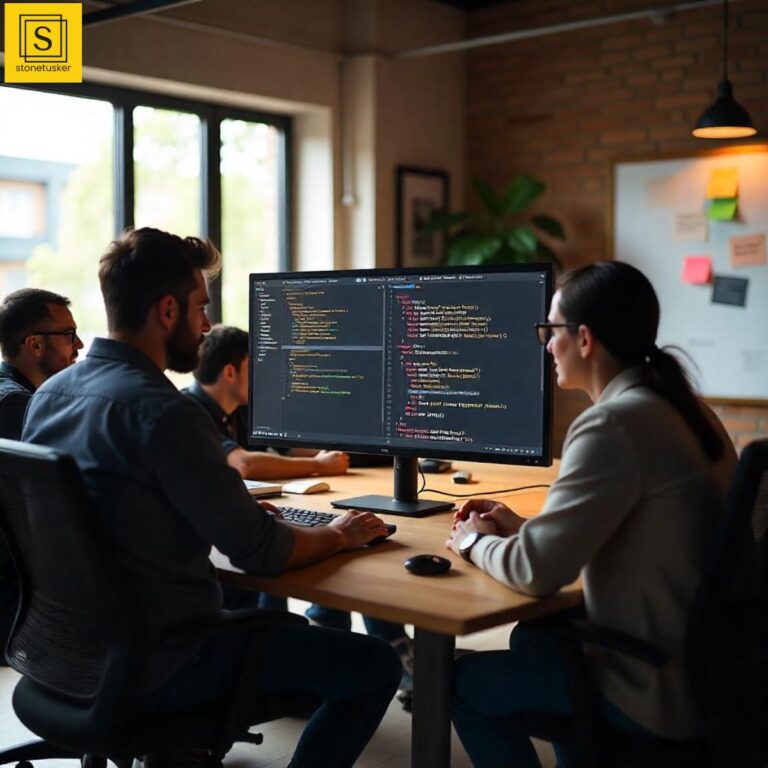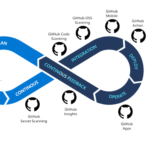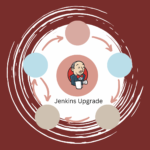Why Merge Conflicts Matter
If you’ve ever worked on a collaborative software project, you’ve likely encountered the dreaded merge conflict. It’s that moment when your version control system (like Git) throws up its hands and says, “I don’t know which changes to keep!” Merge conflicts can be frustrating, slow down development, and—if not handled well—cause bugs or even data loss. But with the right mindset, best practices, and modern tools, resolving merge conflicts can become a manageable, even routine, part of your workflow.
Understanding Merge Conflicts
What Is a Merge Conflict?
A merge conflict occurs when two branches in a version control system make incompatible changes to the same part of a file, or when one branch deletes a file that another branch modifies. The system can’t automatically decide which version to use, so it asks you to resolve the conflict manually[2][7].
How Do Merge Conflicts Happen?
- Two developers change the same line in a file on different branches.
- One developer deletes a file that another developer is editing.
- Multiple branches are merged after long periods of independent changes (the notorious “big bang” merge).
Identifying and Resolving Merge Conflicts: A Step-by-Step Guide
Step 1: Identify the Conflict
- Git notifies you of conflicts during a merge or rebase.
- Conflicted files are marked with special conflict markers:
<<<<<<< HEAD,=======,>>>>>>> branch-name[2][7]. - Use
git statusto see which files are conflicted[9].
Step 2: Analyze the Conflict
- Use
git diffto see differences between branches[3][9]. - Use
git blameto identify who made the conflicting changes. - Discuss with teammates if the conflict is unclear—communication is key.
Step 3: Resolve the Conflict
- Open the conflicted file in your editor.
- Decide whether to keep your branch’s changes, the incoming branch’s changes, or combine both.
- Edit the file to remove conflict markers and finalize the correct code.
- Use visual merge tools (see below) for a clearer, side-by-side comparison.
Step 4: Mark as Resolved and Commit
- After editing, use
git add <file>to mark as resolved. - Commit the changes with a clear message:
git commit -m "Resolved merge conflict in main.js". - Run tests to ensure nothing is broken.
Step 5: Push and Share
- Push your resolved branch to the remote repository.
- Let your team know the conflict is resolved.
Quick Command Reference
git status
git diff
git log --merge
git checkout --conflict=merge <file>
git mergetool
git add <file>
git commit
git push
For more, see GitHub's official guide.
Best Practices to Prevent and Minimize Merge Conflicts
- Pull changes frequently: Always pull from the main branch before starting new work[2].
- Work in small, focused commits: Smaller changes are easier to merge and review[2].
- Communicate with your team: Let others know what you’re working on to avoid overlap[2][10].
- Rebase when appropriate: Rebasing can keep your history clean, but use with caution in shared branches.
- Use feature flags: Isolate incomplete features to reduce merge complexity.
- Document resolutions: Keep a conflict resolution playbook for the team[11].
- Automate testing: Run tests after merges to catch issues early[10][11].
- Simulate conflicts for training: Practice resolving mock conflicts to build team confidence.
Tips and Tricks for Smooth Conflict Resolution
- Stay calm: Most conflicts are routine—don’t panic.
- Understand the context: Use
git log --merge -p <file>to see the history behind changes. - Test thoroughly: Always run your test suite after resolving conflicts to ensure stability[10].
- Prefer frequent, small merges: Avoid the “big bang” merge, which is more likely to result in complex conflicts.
- Keep your branch up to date: Regularly merge or rebase from the main branch.
- Communicate early: If you anticipate a big merge, coordinate with the team to minimize disruption.
Handling Big Bang Merges
A “big bang” merge is when multiple branches or a long-lived branch is merged after a long period of independent development. These merges are notorious for producing a large number of conflicts.
- Plan ahead: Announce the big merge in advance and freeze changes in the affected areas.
- Divide and conquer: Break the merge into smaller, logical steps if possible.
- Use advanced merge tools: Visual tools and three-way merge tools can help clarify complex conflicts.
- Assign merge owners: Designate experienced team members to oversee and coordinate the merge.
- Document everything: Keep detailed notes on what was merged and how conflicts were resolved.
- Test continuously: Run automated tests after each merge step.
- Debrief and update processes: After the merge, review what went well and what didn’t to improve future merges.
Tools for Resolving Merge Conflicts
- VS Code Merge Tool: Inline markers, side-by-side view, and easy options to accept current, incoming, or both changes. Highly recommended for most developers.
- IntelliJ IDEA Merge Tool: Visual interface, automatic resolution of trivial conflicts, and a guided wizard for complex merges[3][5].
- SourceTree: Visual Git client with interactive conflict resolution and diff view.
- KDiff3: Cross-platform, three-way merge tool for graphical conflict resolution.
- Beyond Compare: Advanced comparison and merge features for power users.
- GitKraken: User-friendly Git client with built-in merge conflict resolution, available as a standalone app or VSCode extension.
- GitHub Web Conflict Editor: Resolve simple conflicts directly in the browser for pull requests.
- Git’s Built-in Mergetool: Text-based interface for resolving conflicts in the terminal.
How to Configure a Merge Tool in Git
git config --global merge.tool vscode
git config --global mergetool.vscode.cmd "code --wait $MERGED"
git mergetool
Emerging Trends: AI and the Future of Merge Conflict Resolution
- AI-powered tools: Tools are emerging that use machine learning and NLP to analyze code changes, predict conflicts, and even suggest or automate resolutions.
- Real-time collaboration: AI-assisted platforms allow developers to work on the same codebase simultaneously, intelligently merging changes as they happen.
- Conflict prediction: AI can analyze patterns in code changes to warn about likely conflicts before they occur, enabling proactive resolution.
- Blockchain-based conflict resolution: Decentralized platforms offer transparent, secure ways to manage code merges and conflict histories.
Learn more about future trends
Challenges and Solutions in Practice
Common Challenges
- Conflicts in binary files (images, compiled assets) that can’t be auto-merged.
- Long-lived branches that drift far from the main branch.
- Large teams with overlapping areas of responsibility.
- Insufficient communication about ongoing work.
- Merge disasters that destabilize the codebase.
Practical Solutions
- Lock or coordinate changes to binary files.
- Merge or rebase frequently to keep branches close to main.
- Assign code ownership to reduce overlap.
- Hold regular standups to discuss ongoing and upcoming changes.
- After a merge disaster, document what happened and update team practices[11].
- Simulate merge conflicts in training to build team skills[11].
Real-World Example: Lessons from a Merge Disaster
Case Study: A team delayed merging a feature branch for weeks. When they finally attempted the merge, dozens of conflicts appeared, causing days of delays and bugs in production. The team learned to merge more frequently, automate testing, and document conflict resolutions for future reference.
Conclusion: Key Takeaways
- Merge conflicts are a normal part of collaborative development—don’t fear them.
- Stay proactive: pull often, communicate, and merge in small batches.
- Use modern tools and visual interfaces to simplify conflict resolution.
- Document and learn from each conflict to improve team processes.
- Embrace emerging AI tools to further automate and streamline merges.
Ready to take your team’s merge process to the next level? Contact us for expert guidance, training, or help with your next big merge!
Further Reading and References
- GitHub Docs: Resolving a merge conflict using the command line
- CloudThat: Git Best Practices—Managing Merge Conflicts
- Pixel Free Studio: Git Merge Conflicts Resolved—Lessons from a Disaster
- TeamHub: Understanding Merge Conflict in Software Development
- Stack Overflow: How do I resolve merge conflicts in a Git repository?
- Readingraphics: Best Books on Conflict Resolution
- Global Peace Careers: 15 Conflict Resolution Books
- Pollack Peacebuilding: Best eBooks on Workplace Conflict Resolution
Recommended Books
- Getting to Yes by Roger Fisher and William Ury
- Crucial Conversations by Kerry Patterson et al.
- The Anatomy of Peace by Arbinger Institute
- Negotiating the Impossible by Deepak Malhotra
- The Conflict Paradox by Bernie Mayer



